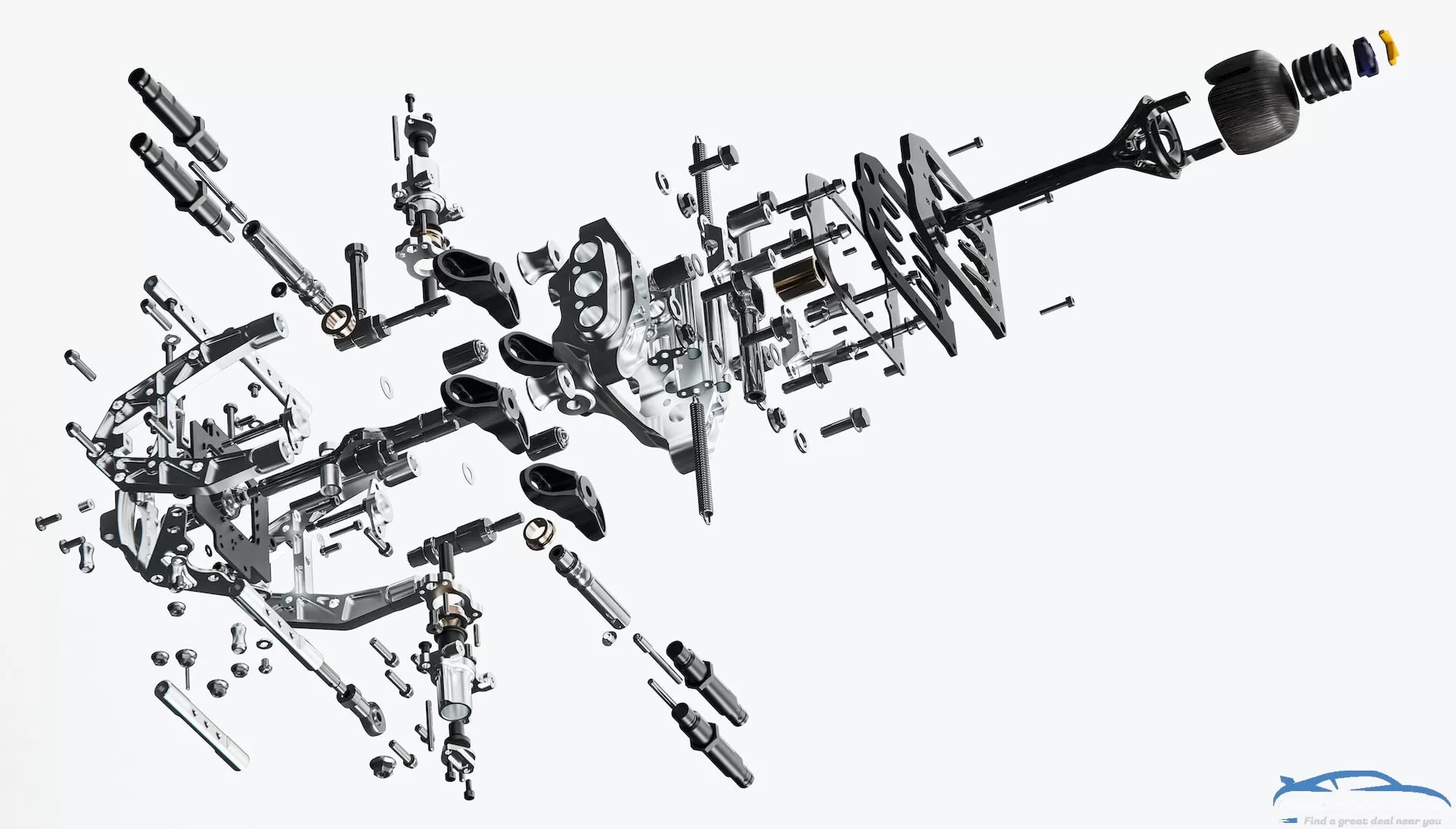GMA T.33 Hypercar: Inscrutable Name ... “Better Than the McLaren F1”?!

Is the GMA T.33 better than the McLaren F1? Gordon Murray smiles. "Oh, yes," he says. "The engine's better, the gearbox is better. It's lighter and has a slightly better power to weight ratio. The finish and the quality are much better."
The McLaren F1, created by Murray in the early 1990s at the height of his fame as a rock star grand prix race car designer, is widely regarded as the seminal hypercar, a car that set absolute benchmarks for on-road performance. One sold last year for more than $20 million. The GMA T.33, Murray's new ultralight, driver-focused mid-engine coupe will be priced from about $1.85 million, plus tax, when production starts in 2024.
In the context of today's McLaren F1 market, it sounds like a bargain.
The T.33 is the follow up to last year's T.50, the car Murray designed specifically as a 21st century successor to the McLaren F1 and a halo for his GMA brand. Like the T.50, it's powered by a high-revving naturally aspirated V-12 and will be available with a six-speed manual transmission. But beyond elements of the powertrain—and the air conditioning system and interior switchgear—the T.33 shares nothing with the T.50. It's a completely different car, designed for a completely different purpose.
The T.33's engine has less power, less torque, and a lower rev limit than the version used in the T.50 and T.50 Niki Lauda. Dubbed the Cosworth GMA.2 and distinguished by its yellow cam covers (the T.50's were orange and the T.50 Niki Lauda's red) it makes 607 horsepower at 10,500 rpm and 333 lb-ft of torque at 9,000 rpm, 47 hp and 11 lb-ft fewer than in T.50 spec. This is due to different cams, revised valve timing and engine mapping, and new intake and exhaust systems.
The decision to lop 1,000 rpm from the engine's top end wasn't just a case of ensuring differentiation between T.50 and T.33. "To be really honest," Murray says, "the main reason is that 12,100 rpm in a 4.0-liter engine with valve springs is getting right up there on the ragged edge. Going to 11,100 rpm makes much more sense." Just for reference, in T.50 spec the engine makes peak power at 11,500 rpm.
The other benefit is improved drivability. Murray says in T.50 spec the engine delivers 70 percent of its peak torque from just 2,500 rpm, but the T.33 version pumps out 75 percent of its peak torque at the same crank speed and 90 percent from 4,500 rpm. "I've never driven a V-12 with such low-down torque," he says of his test sessions in the T.50, "but the T.33 is on another level altogether."
As in the T.50, the T.33 V-12 drives the rear wheels through a six-speed manual transmission designed and developed by British motorsport specialist Xtrac. The T.33's transmission, which weighs just 177 pounds, shares its ultralight casing with the T.50 unit, but all the internals are new.
Unlike the T.50, the T.33 can be ordered with a paddle-shift transmission. Also developed by Xtrac, this transmission features the company's ingenious Instantaneous Gearchange System (IGS), which features an integrated ratchet and pawl mechanism between each gear hub and the main shaft so that two consecutive gear ratios can be selected and engaged simultaneously, but with only one set of gears driving. As there are no clutches to actuate, switching from one ratio to the next is, well, instantaneous, and there's no interruption to the torque flow.
Murray says the paddle-shift T.33 will be significantly quicker than the manual car, both in a straight line and on the track, but notes that of the 60 cars already pre-sold—like the T.50, just 100 are being built—only three have so far been ordered with the IGS transmission.
The T.33's chassis eschews the usual practice of bolting front and rear subframes to a central carbon-fiber tub. Instead, the car's central structure comprises Formula 1-style aluminum-core carbon-fiber panels bonded around aluminium tubes that run from front to rear. The carbon-fiber elements provide the essential torsional and bending stiffness, as well as a strong structure for crash safety, and the design eliminates the need for bolted joints.
"A bolted joint is messy and heavy, and it's flexible," Murray says. "No matter how well you do it, there's always a bit of joint movement at the transition from tube to carbon."
Up front, supporting the suspension, steering rack, and stabilizer bar, is a single aluminum casting, which Murray won't describe in detail other than to hint it's similar in concept to the organic Bionicast structure used at the rear of the Mercedes-Benz EQXX concept. At the rear, aluminum tubes simply cradle the engine, which is attached with just four bolts. The rear suspension is bolted directly to the transmission, and although the engine is rubber-mounted to reduce noise, vibration, and harshness, a clever trapezoidal link setup is used to lock the engine and transmission into place when subjected to loads through the rear wheels.
Murray reckons the innovative design of the T.33 chassis, which is loosely based on the iStream process he developed to build lightweight cars at low cost and high volume, makes it about 44 pounds lighter than a contemporary supercar chassis of a similar size. "It's taken two years to develop the technology, and we're thinking we might build the T.33 chassis ourselves to keep it in-house," he says.
Like all Gordon Murray cars, the T.33 is light. Target weight is just 2,403 pounds, a mere 230 more than the T.50 despite the car being engineered to be built in both left- and right-hand drive and meeting all U.S. and European crash regulations. That means the T.33 doesn't need massive brakes, wheels, or tires. The standard brakes are carbon ceramic, with relatively modest 14.6-inch-diameter rotors in front and 13.4-inch units at the rear. The tires are relatively modest, too—235/35 Michelin Pilot Sport 4s on 19-inch forged wheels up front and 295/30 items on 20-inch wheels out back. Power steering is by way of a new hydraulically assisted system specially developed for the car.
And like all Gordon Murray cars, the T.33 will have a relatively comfortable ride. "I never do stiffly sprung cars," Murray says. "I just don't like them. If you are going to drive it on a track, you're going to feel a bit of roll and pitch." However, for those customers who want to spend most of their time in their T.33s at track days, GMA will offer a sportier suspension setup. "The cars are so handbuilt, we can do virtually anything for the customers."
It's difficult to judge from the photos, but the T.33 is about the same length overall as a Porsche 718 Cayman even though its roofline is 5.5 inches lower and its 107.7-inch wheelbase is an astounding 10.3 inches longer. The pictures don't show the subtlety of its design, either, the overall flavor of which has been inspired by Murray's passion for 1960s mid-engine sports cars such as the Ferrari 206 SP Dino and the Alfa Romeo 33 Stradale.
The central driving position of the T.50 dictated a very cab-forward proportion. As the T.33 has a conventional driving position, which allows the pedals to be located farther rearward in the chassis, its cabin is, like those 1960s cars, more centrally located between the wheels. The wasp-waisted car also has a broad front air intake, pronounced haunches over all four wheels, and just the merest hint of a Kamm tail at the rear.
The relatively clean and simple surfacing belies some truly clever design details. There are no visible door handles; access to the cabin is via touch-sensitive buttons in the Gordon Murray Automotive logos at the base of the B-pillar. The fuel and oil fillers are hidden behind the panels on the pillars. The small vent at the base of the vertically stacked headlights not only ducts air to the front brakes but also allows the car to pass low-speed crash requirements while echoing iconic 1960s headlight graphics.
"There's nothing just for styling's sake on the car at all," Murray says. "Every single element has something to do. " The wide front air intake, for example, houses all the cooling hardware, which means there's no need for unsightly and un-aerodynamic ducts in the body side. Extra cooling air is ducted into the engine compartment from under the car.
The ram air intake above the cabin is another case in point. While in other mid-engine cars such intakes are part of the bodywork, in the T.33 it's mounted directly to the engine and stands proud of the bodywork so it can move. That eliminates the need for a flexible coupling, which means the internals of the entire intake can be kept perfectly smooth.
The other benefit, Murray explains, is more subtle: "If the intake is flush to the roof, you get a boundary layer buildup [of slow-moving air], which renders the bottom slice of the intake quite useless. By having the intake separate and floating above the car, we bleed off the boundary layer into the engine bay, which is low pressure, and then we can have a smaller, more aerodynamic duct."
Although the T.33 doesn't have the downforce of the fan-forced T.50, learnings from that car have been incorporated into the floor design. Two big diffusers at the front of the car help deliver downforce to the front axle. And while testing the T.50, Murray's team found the unique stepped diffuser at the rear of the car, which had been designed to work in conjunction with the fan drawing air through it, delivered 30 percent more downforce than expected with the fan switched off.
A revised version of the stepped diffuser layout is now a feature of the T.33's floor. "It was a happy accident," Murray says of the discovery. "But it means most of the downforce is developed at the front of the diffuser, near the car's center of gravity."
Combined with the two-thirds total downforce developed by the front diffuser, that means the T.33 doesn't need a splitter protruding from underneath the front air intake. The only active aero device on the car is a rear wing that tilts to maintain aero balance at high speed and flicks to near vertical under braking.
All this careful attention to aerodynamic detail has resulted in one very practical benefit: luggage capacity. In addition to being able to accommodate two cases in its full-width frunk, the T.33 can also carry two each in either side of the car, in compartments between the door opening and the rear wheel. To access the compartments, the entire rear quarter panels are hinged at the rear.
The GMA T.50, with its central driving position and fan-forced active aerodynamics, is a trophy car, the state-of-the-hypercar-art as expressed by the man who invented the concept 30 years ago. The GMA T.33 has been designed to similarly celebrate light weight and ultimate driving thrills, but also to have the ride quality and ground clearance and luggage capacity that allows it to be driven every day.
"I could see myself using one all the time," says Murray, whose current daily driver is the delightful, delicate Alpine A110. "If you had to have only one supercar, the T.33 is it."
There's another reason to desire a T.33, too. More V-12-powered GMA cars are coming—another two are planned over the next decade—but all will have some form of electrification to enable them to meet emissions regulations. "This will be our last nonhybrid car," Murray says. "If anybody wants the last, beautiful V-12 without any hybridization, this is the one."
You may also like
The mighty rose and fell in the auto industry in 2021. A critical shortage of microchips helped determine winners and losers in U.S. sales for the year more than any other factor. Aberration or not, the surprises are worth noting when companies deemed too-big-to-fail fall off their long-held perches and underdogs ascend to new heights.Business publications have splashed plenty of ink in the annual presentation of final U.S. auto sales as another year came to a close. We won't go all corporate and financial here at MotorTrend but there were some unexpected plot twists that deserve to be pointed out—regardless of any asterisks due to chip shortages.Toyota Topples GM For the First TimeThe biggie: after decades of U.S. sale supremacy, Toyota beat General Motors in 2021. GM sold 2.2 million vehicles, but Toyota had about 114,000 more for a total of 2.3 million.Toyota executives were quick to say the lead is not sustainable. GM will be back on top as chip supplies normalize. The semiconductor shortage hurt all automakers, but some were hit harder than others. GM and Ford were among the more heavily pummeled. Toyota was the poster child for how to—almost—survive the chip crisis.Toyota is no stranger to pinchpoints from key parts shortages. After the 2011 Tōhoku earthquake, Toyota put an early warning system in place to monitor its supply chain. The result is that the inventor of the concept of lean manufacturing and just-in-time delivery became a hoarder. Once warned, the Japanese automaker stockpiled chips and was able to keep building and selling vehicles full steam while the competition was playing whack-a-mole in determining which vehicles took priority in receiving chip rations and which plants faced temporary downtime on any given week.As the shortage stretched out and was exacerbated by a fire at the Renesas Electronics chipmaking plant in Japan, and then COVID-19 outbreaks that forced closure of facilities in southeast Asia that test and package chips, Toyota was finally forced to idle some plants. But in the end, Toyota saw 10 percent sales growth in the U.S. in 2021 while GM saw a 13 percent drop because it lost hundreds of thousands of units of production.Hyundai-Kia Leapfrogs Over HondaHyundai-Kia outsold Honda for the first time, moving up to the fifth spot with almost 1.5 million vehicles sold. That was about 22,500 more than Honda. The two brands under the Hyundai Motor Company umbrella continue to be a juggernaut. This one will be interesting to watch in 2022 because the Korean brands show no signs of slowing down and have impressive vehicles hitting the market.The Hyundai group still has work to do to catch Stellantis at just shy of 1.8 million, or Ford at almost 1.9 million.Ford EVs Coming for TeslaFord, which was considered a bit of an EV laggard until fairly recently, ended 2021 in second place when it comes to U.S. sales of electric vehicles. Credit goes to the new Mustang Mach-E; Ford sold more than 27,000 of the electric crossovers.King of the EV castle continued to be Tesla which had a banner year. How banner we don't know exactly as it the automaker does not break out U.S. sales.General Motors was out of the running in 2021, not because of the chip shortage, but because the Chevrolet Bolt was all but sidelined for much of the year by a recall due to risks of fire from bad cells in its batteries and a recommendation to park outside.Ford Mustang vs. Dodge Challenger vs. Chevy CamaroThe muscle car sales wars are legendary, and we never tire of the jostling, even though their makers don't always give them the love they once received.We have a cool toppling this year. The Dodge Challenger actually stole the title in 2021. The coupe is no spring chicken, and this wasn't a chip shortage win. Credit energetic execs behind the Dodge brand who never say die. Efforts to keep the Challenger fresh led to a 3 percent increase in sales, bringing the total to 54,314 muscle cars sold and the highest full-year share ever at 21 percent of the albeit-small segment. (Dodge Charger also grew market share to a career-best 30 percent, more testament to pixie dust being sprinkled liberally over at Dodge).That pushed the Ford Mustang to second place. A 14 percent drop resulted in a final sales tally of 52,414. For the bronze: the Chevy Camaro saw sales plummet almost 27 percent, netting 21,893 sales. The once-mighty Camaro must be missing its long-time engineer: Al "Mr. Camaro" Oppenheiser, who was reassigned to the GMC Hummer EVs and is busy crabwalking and hurtling 9,000 pounds of SUV from 0-60 in 3.0 seconds. It probably doesn't help that today's Camaro doesn't look all that different from the last one, or the one before that...Big Truck WarsNo surprises here: Ford took the title for best-selling truck in the U.S. for the 45th straight year, selling more than 726,000 F-Series. Ram came second at just under 570,000. The Chevrolet Silverado could get a needed boost from the electric version coming—the Chevy came third in 2021 with almost 520,000 U.S. sales.Who said following auto sales isn't fun?
The Koenigsegg CC850's remarkable gearbox is a cleverly evolved version of the nine-speed automated manual Light Speed Transmission (LST) fitted to the Koenigsegg Jesko. The technology is emblematic not just of Christian von Koenigsegg's knack for catchy product names, but, more important, of his irrepressibly left-field approach to hypercar engineering.In the Jesko, you select the LST's gear ratios via paddles. The new iteration in the CC850 has no paddles. Instead, It's controlled via a shifter that sprouts from a classic slotted metal gate, and there's a clutch pedal on the left, too. But neither are connected to the physical transmission, and no clutch or flywheel are mated to the engine's crankshaft, either.It's the world's first shift-by-wire manual transmission.In manual mode, you select from six of the nine forward ratios; move the lever all the way to the right and pull backward, and the transmission operates as an automatic, shifting for itself and using all nine gears to funnel the CC850's massive 1,385 hpr (on E85 fuel) to the road.Dual-clutch automatic transmissions used in most cars (hyper or otherwise) are programmed to essentially assume which gear the driver will want to select next. When the appropriate shift paddle is clicked or the computer determines it's time to shift, it simultaneously releases the clutch driving the gear you're shifting from while engaging the second clutch for the gear you're shifting to. It then moves the gearset to prepare what it thinks will be the next ratio needed.Inside the Koenigsegg LST, however, no gearsets move. Instead, there are three shafts with two gears each, and they are all permanently engaged. Which combination of gears sends drive to the wheels is determined by opening and closing seven very compact clutches within the transmission.Unlike in conventional dual-clutch transmissions, it's possible to go directly from, say, ninth to fifth without shuffling down through eighth, seventh, and sixth to get there. All the LST transmission does is open and close the relevant clutches, and bingo—you're instantly in the gear you want.How does it work? We'll let the man himself explain. "It's a clutch-by-wire," von Koenigsegg said, "but you feel the pressure of the clutch through the pedal the same as with a traditional one. It's just electronically connected. You can go in and out of the point [where the clutch bites]. You can launch with revs. You can step off the pedal too quickly and stall the car. It feels no different than a normal clutch."The shifter was a bit more challenging because we don't have forks or synchros or anything in our LST transmission. All gears are always engaged. We're only clutching."Force-feedback mechanisms link the shifter to the clutch movement. If you want to pull out of a gear, you can't do that until you have a certain movement on your clutch pedal, like in a traditional car. If you want to shift into a gear that's too low, you can't get the shifter into the gate. If the gear is only a little bit too low, you feel a little resistance, like you would get from synchros."We still are in the process of developing it, but it's already crazy good. When we are done with it, I don't think anyone will be able to tell it apart from a traditional manual. That's the objective. It should feel like a mix between a Mazda Miata and a Ferrari gated shifter. The best of the two worlds."
People trip over Amazon boxes to get inside their homes. Online shopping was big business before the pandemic and is now the go-to for many consumers for most goods with one notable exception: buying cars.The auto industry is behind the rest of the world when it comes to online purchases, even though buyers consume everything else digitally, TrueCar President and CEO Mike Darrow said during a presentation at the Automotive Press Association in Detroit.Death, Taxes, and Car SalesBut that will change—and fast. In 2019, a mere 1 percent of auto sales, new and used, were conducted digitally. It grew to 10 percent in 2020, spurred by COVID shutdowns and lockdowns. By 2025, 40 percent of auto purchases in the U.S., about 23 million new and used vehicles, will be conducted completely online, Darrow says, and surveys show 62 percent of people say they would buy online if they could.It shouldn't be that hard. The IRS reported that 71 million people filed their U.S. income tax online this year with no help—that's gotta be harder than buying a car online, Darrow says.The transition from a century-old way of selling cars by visiting a dealership is also being fueled by new automakers, starting with Tesla which prominently adopted a direct sales strategy that is being followed by other new electric carmakers including Rivian, Lucid, and VinFast.Ford Wants to Sell EVs OnlineConventional automakers also want the flexibility. Ford CEO Jim Farley recently said he would like to switch to haggle-free pricing and digital sales for EVs, with dealers as service centers for customers who buy their vehicles online.Darrow sees it as a way for automakers like Ford to stimulate conversation with their retailers and while he sees EVs as a good focus initially, he favors digital sales for all vehicles regardless of age or powertrain. The TrueCar CEO fully expects automakers to develop their own in-house digital sales process that will compete with TrueCar. The difference: Ford will sell to those who already know they want a Ford; TrueCar will offer cross-shopping across multiple brands for the consumer looking at a wider field.TrueCar+TrueCar has used a leads-based model to date where it helps consumers find a car and passes the lead on to a dealer to complete the transaction. But TrueCar is testing a new model called TrueCar+ in Florida that would be the first new and used car online marketplace, allowing its 8.6 million monthly visitors to conduct the entire car-buying process online, from sourcing and pricing to insurance and financing, before handing it off to the dealer to supply the vehicle.New ways of doing business are taking over during difficult times for dealers and online shopping sites alike with the scarcity of inventory. TrueCar has about 1 million vehicles listed on its site, half the usual menu. Of those, less than 300,000 are new cars; the site usually has 1 million new cars that dealers are offering up for sale.




0 Comments